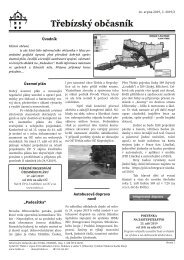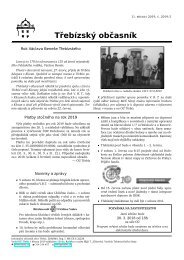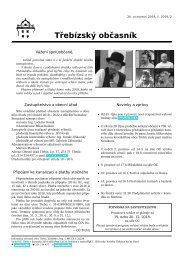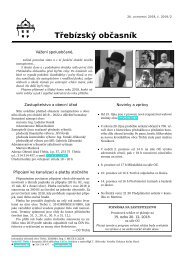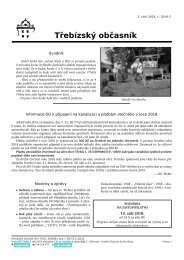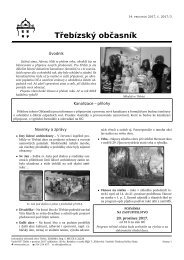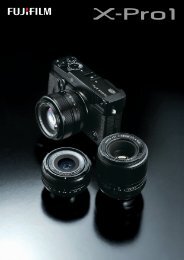FUJIFILM X-Pro1 Photographes's Guidebook
Create successful ePaper yourself
Turn your PDF publications into a flip-book with our unique Google optimized e-Paper software.
Interview in Macao Impressions of using the X-<strong>Pro1</strong> in Macao<br />
<br />
Notes about using the X-<strong>Pro1</strong> in Macao<br />
by photographer Yoichi Sone<br />
Film simulation is a function that pros can use in their work<br />
This time I chose ASTIA setting for the X-<strong>Pro1</strong> film simulation when shooting<br />
and again I was very pleased by the excellent color tone. While the coloring<br />
was vivid, the graceful color tone was very good. The film simulation function<br />
is very well done. PROVIA and Velvia offer the same images as those taken<br />
with standard film. No other camera manufacturer can provide this kind of<br />
color reproduction. Fujifilm was able to develop this function because of their<br />
history manufacturing film. It was also amazing to be able to take pictures while<br />
changing the settings to suit various situations. This is because photographers<br />
like me used to actually choose film and shoot in this way. In this respect, I think<br />
film simulation is a function that professionals can use in their work. While color<br />
shots are good, monochrome and sepia shots are amazing. The fact that it<br />
feels like a genuine printed monochrome photo is amazing. Sepia is also good<br />
because it has no artificiality. In addition to the standard monochrome mode,<br />
there are also three types of proper monochrome filters. I frequently used the<br />
Ye filter to increase the contrast slightly while shooting this time. When taking<br />
pictures of clouds, I attached the R filter and shot while remembering the days I<br />
shot using film. The experience was extremely meaningful for me.









